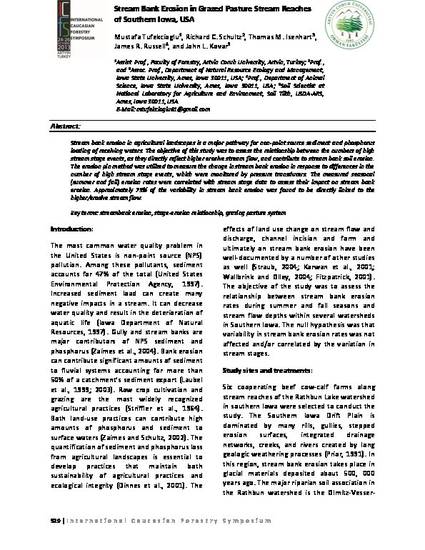
Stream bank erosion in agricultural landscapes is a major pathway for non-point source sediment and phosphorus loading of receiving waters. The objective of this study was to assess the relationship between the numbers of high stream stage events, as they directly reflect higher erosive stream flow, and contribute to stream bank soil erosion. The erosion pin method was utilized to measure the change in stream bank erosion in response to differences in the number of high stream stage events, which were monitored by pressure transducers. The measured seasonal (summer and fall) erosion rates were correlated with stream stage data to assess their impact on stream bank erosion. Approximately 75% of the variability in stream bank erosion was found to be directly linked to the higher/erosive stream flow.
Available at: http://works.bepress.com/thomas_isenhart/27/

This proceeding is from the International Caucasian Forestry Symposium (2013): 529.